A Cosmology of Monsters, the debut from Shaun Hamill, has a story so richly compelling on an emotional level and so full of creeping dread that it is more meant to be read, than to be read about. Because of this, I will do my best to refrain from revealing too many details from the plot of the book.
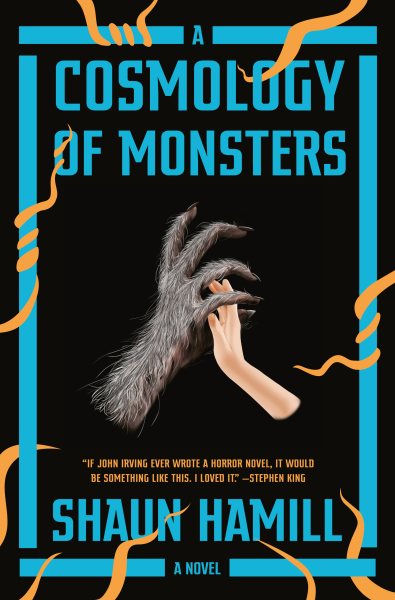 Instead, I will say this: Cosmology opens with two quotes. The first is a quote from Ray Bradbury about the legendary actor Lon Chaney, known for playing The Wolf Man. The second is an excerpt from The Call of Cthulhu by H.P. Lovecraft. These quotes are masterfully chosen, simply because they perfectly set the tone of the novel.
Instead, I will say this: Cosmology opens with two quotes. The first is a quote from Ray Bradbury about the legendary actor Lon Chaney, known for playing The Wolf Man. The second is an excerpt from The Call of Cthulhu by H.P. Lovecraft. These quotes are masterfully chosen, simply because they perfectly set the tone of the novel.
The latter quote exemplifies the “fear of the unknown” that made Lovecraft, though a deeply problematic figure in literature, the powerhouse of horror that influenced nearly every writer in the genre to this day. It is the the eerie feeling of not fully understanding what is happening; the helplessness of an observer. Hamill executes this masterfully.
The first quote, however, is far more meaningful. It describes the effect that Lon Chaney had on audiences, not as a monster, but as a man tapping into the monster we fear is within each of us. It puts forward the notion that Lovecraft may have been wrong, that the greatest fear isn’t of the unknown, but rather a fear of oneself. Hamill certainly weaves a tale of Eldritch Horror that fits right in with the tales of Lovecraft, but where the book shines is not with the monsters, but with the people.
The central story of the novel revolves around two generations of the Turner family, and their creation: a scary Halloween attraction that comes to be known as The Wandering Dark. The protagonist, the youngest son of the family, narrates the tale as a chronicle of his history, and the story very much unfolds this way. Yes, there is horror. Yes, there are monsters, but at the heart of all of this is a compelling work of fiction about grief, mental illness, love, hardships, and family. Hamill’s shining achievement is not in creating a new mythos of dread, though he has certainly done that, it is in crafting a new piece of Eldritch Horror that is quite approachable and universal. I’m confident that anyone could read A Cosmology of Monsters and relate to it on some level, and that is truly rare for a book in this genre.
I loved this book. Anyone who has spoken to me knows this. It’s my favorite book of 2019 and possibly of the last few years. If you want to read something truly unique and special, and maybe even get a few scares too, come get a copy.
Shaun Hamill will be at Lemuria on Wednesday, September 18, at 5:00 p.m. to sign and discuss A Cosmology of Monsters.


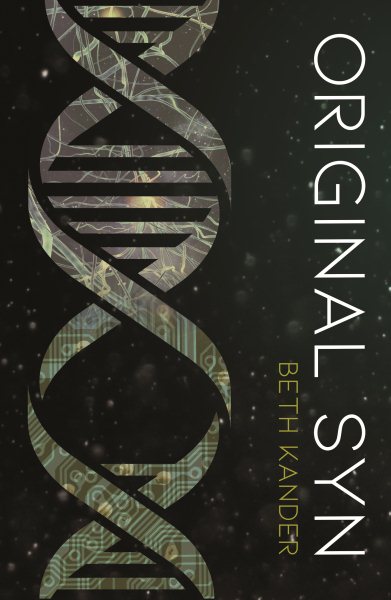 For the characters of Beth Kander’s
For the characters of Beth Kander’s 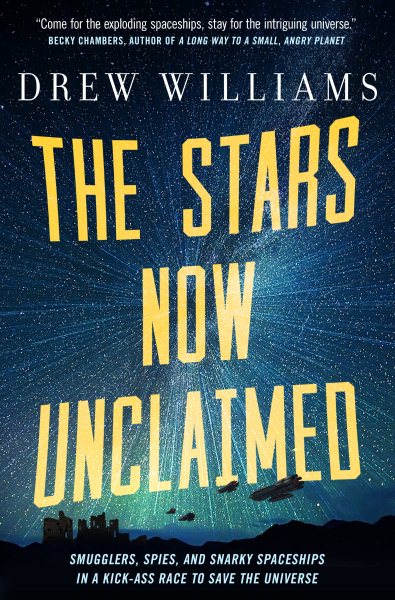 This is what Drew Williams posits in his
This is what Drew Williams posits in his  A strange vision of the future in which all of existence is affected by a an expanding calamity known only as “The Pulse,” which degrades technology and sends entire planets back to the stone age while leaving others completely untouched: This is the world of
A strange vision of the future in which all of existence is affected by a an expanding calamity known only as “The Pulse,” which degrades technology and sends entire planets back to the stone age while leaving others completely untouched: This is the world of 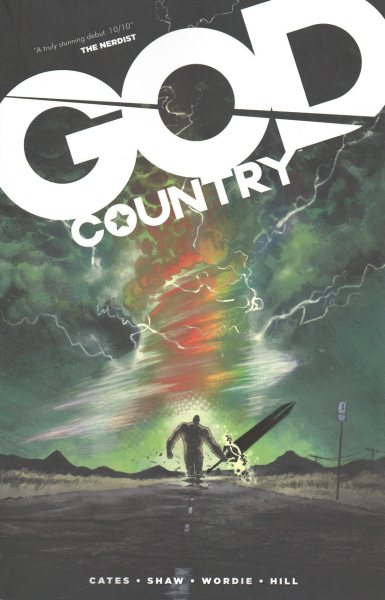 God Country has one of the most fascinating concepts I have seen in a while. It tells the story of Roy Quinlan and his family, particularly his father Emmett, who is suffering from Alzheimer’s. However, everything changes for the Quinlans when a magic sword falls from the sky in West Texas, and comes into Emmett’s possession. As long as Emmett is holding the sword, his Alzheimer’s is cured and all of his memories of his family return. However, the godlike beings to whom the sword belongs are coming for what is rightfully theirs, and Emmett is forced to fight for his memories. The story is fresh and interesting; it provides plenty of fun fantasy and action without giving up the soul at the center: the story of a family and a man who is struggling with the reality of his illness. The art style in God Country reflects the duality of the plot perfectly. The bleak, open landscapes of Texas contrast with Shaw’s fantastical concepts of the realms of the gods. Overall, God Country delivers emotion and spectacle in the five parts contained in this single volume.
God Country has one of the most fascinating concepts I have seen in a while. It tells the story of Roy Quinlan and his family, particularly his father Emmett, who is suffering from Alzheimer’s. However, everything changes for the Quinlans when a magic sword falls from the sky in West Texas, and comes into Emmett’s possession. As long as Emmett is holding the sword, his Alzheimer’s is cured and all of his memories of his family return. However, the godlike beings to whom the sword belongs are coming for what is rightfully theirs, and Emmett is forced to fight for his memories. The story is fresh and interesting; it provides plenty of fun fantasy and action without giving up the soul at the center: the story of a family and a man who is struggling with the reality of his illness. The art style in God Country reflects the duality of the plot perfectly. The bleak, open landscapes of Texas contrast with Shaw’s fantastical concepts of the realms of the gods. Overall, God Country delivers emotion and spectacle in the five parts contained in this single volume.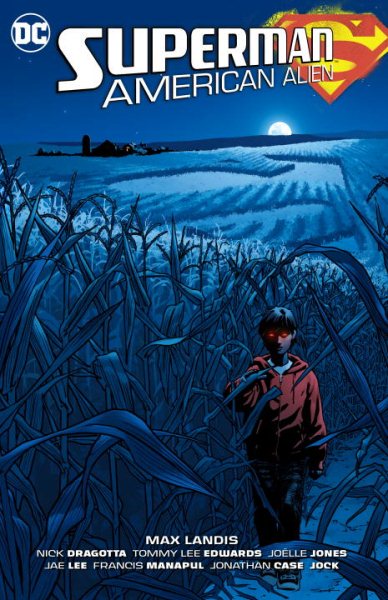 The tagline of this volume, printed in large letters on the back cover, is quite unusual for a Superman comic:
The tagline of this volume, printed in large letters on the back cover, is quite unusual for a Superman comic: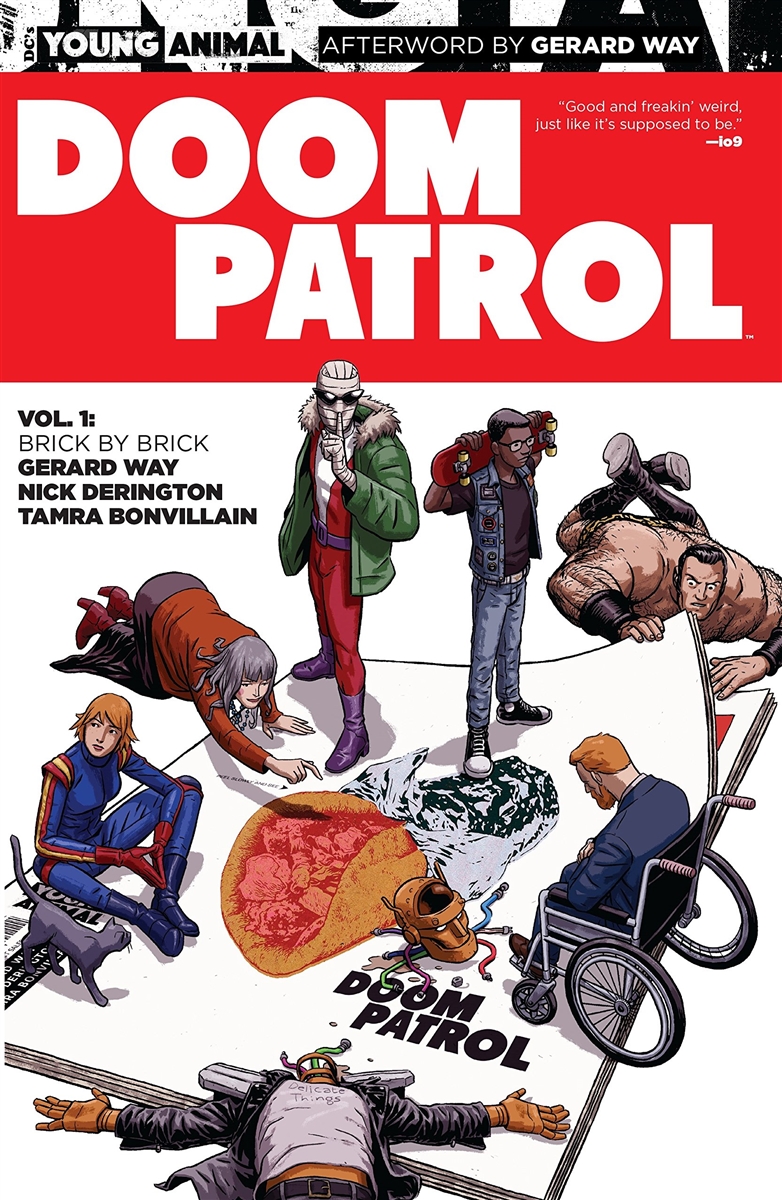 The Doom Patrol is a classic superhero team that first debuted in 1963, and has had numerous iterations over the years. However, this new version of the team, created by Gerard Way of My Chemical Romance fame for his DC Comics imprint Young Animal, breathes new life into the characters. Doom Patrol Vol. 1 is a surrealist, bizarre take on the team. It brings a fantastic strangeness that doesn’t overtake a surprisingly solid plot. In its pages, you’ll find delightful weirdness, unique and fascinating characters, and wonderfully apt cartoon-esque art from Nick Derington that only further accentuates the sheer peculiarity of the whole book. Doom Patrol is a lot of fun and is great read whether you are an old-school comics fan or a new reader
The Doom Patrol is a classic superhero team that first debuted in 1963, and has had numerous iterations over the years. However, this new version of the team, created by Gerard Way of My Chemical Romance fame for his DC Comics imprint Young Animal, breathes new life into the characters. Doom Patrol Vol. 1 is a surrealist, bizarre take on the team. It brings a fantastic strangeness that doesn’t overtake a surprisingly solid plot. In its pages, you’ll find delightful weirdness, unique and fascinating characters, and wonderfully apt cartoon-esque art from Nick Derington that only further accentuates the sheer peculiarity of the whole book. Doom Patrol is a lot of fun and is great read whether you are an old-school comics fan or a new reader
 That being said, Artemis is not just for fans of Science Fiction. In a literary landscape dominated by seriousness, Artemis offers something different; a fun adventure with a backdrop that still touches on many social issues, but doesn’t allow them to overtake the story. It is an escape into a future that may not be necessarily bright, but is certainly exciting and has the reader, consistently curious as to what would happen next.
That being said, Artemis is not just for fans of Science Fiction. In a literary landscape dominated by seriousness, Artemis offers something different; a fun adventure with a backdrop that still touches on many social issues, but doesn’t allow them to overtake the story. It is an escape into a future that may not be necessarily bright, but is certainly exciting and has the reader, consistently curious as to what would happen next.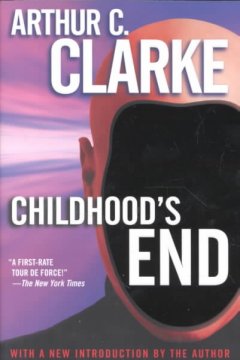 To those who have heard his name, Arthur C. Clarke is most well-known as the co-creator of the book and subsequent film 2001: A Space Odyssey. However, his influence does not stop at cinema. Clarke’s theories in his books about satellites and orbits actually came to fruition in reality, so much so that a geosynchronous orbit used by telecommunications satellites is named after him (
To those who have heard his name, Arthur C. Clarke is most well-known as the co-creator of the book and subsequent film 2001: A Space Odyssey. However, his influence does not stop at cinema. Clarke’s theories in his books about satellites and orbits actually came to fruition in reality, so much so that a geosynchronous orbit used by telecommunications satellites is named after him (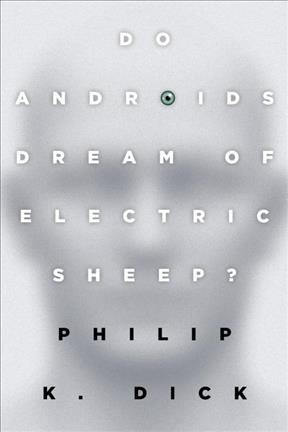 There has been a lot of debate as to which author is truly the quintessential sci-fiauthor, and nearly every one comes to the same conclusion. Philip K. Dick made massive contributions to the entire genre of Science-Fiction, molding it into what it is today. Many of PKD’s works have been adapted to film and television, though few know it. Total Recall, The Adjustment Bureau, Minority Report, The Man in the High Castle, and Blade Runner are all based on his works. Because of this, many people are more familiar with his stories than they realize. My favorite work of his is Do Androids Dream of Electric Sheep?, which was the basis for the film Blade Runner. It is a detective story at it’s heart, the story of Rick Deckard, a “Blade Runner,” a detective who specializes in identifying and decommissioning rogue androids. It’s an interesting take on the classic mystery novel, and I love it.
There has been a lot of debate as to which author is truly the quintessential sci-fiauthor, and nearly every one comes to the same conclusion. Philip K. Dick made massive contributions to the entire genre of Science-Fiction, molding it into what it is today. Many of PKD’s works have been adapted to film and television, though few know it. Total Recall, The Adjustment Bureau, Minority Report, The Man in the High Castle, and Blade Runner are all based on his works. Because of this, many people are more familiar with his stories than they realize. My favorite work of his is Do Androids Dream of Electric Sheep?, which was the basis for the film Blade Runner. It is a detective story at it’s heart, the story of Rick Deckard, a “Blade Runner,” a detective who specializes in identifying and decommissioning rogue androids. It’s an interesting take on the classic mystery novel, and I love it.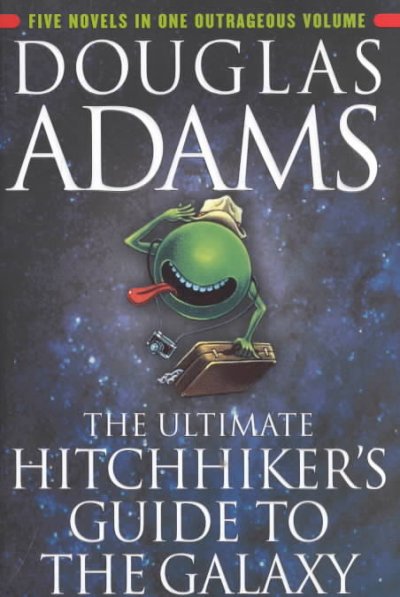 Douglas Adams was, for the most part, a humorist in the vein of Mark Twain, but his genre of choice was science fiction. His masterpiece, The Hitchhiker’s Guide to the Galaxy and its sequels, now published together as The Ultimate Hitchhiker’s Guide to the Galaxy, are the best example of his sharp wit and absurdist style of Adams’ work. The opening of the book features (spoiler alert, although it is the beginning of the book) the destruction of Earth, after which Adams writes “This planet has—or rather had—a problem, which was this: most of the people living on it were unhappy for pretty much all of the time. Many solutions were suggested for this problem, but most of these were largely concerned with the movement of small green pieces of paper, which was odd because on the whole, it wasn’t the small green pieces of paper that were unhappy.” The book is likely the one that I have reread the most, and in my mind, it is, not only one of the funniest novels, but one of the best ever written at all.
Douglas Adams was, for the most part, a humorist in the vein of Mark Twain, but his genre of choice was science fiction. His masterpiece, The Hitchhiker’s Guide to the Galaxy and its sequels, now published together as The Ultimate Hitchhiker’s Guide to the Galaxy, are the best example of his sharp wit and absurdist style of Adams’ work. The opening of the book features (spoiler alert, although it is the beginning of the book) the destruction of Earth, after which Adams writes “This planet has—or rather had—a problem, which was this: most of the people living on it were unhappy for pretty much all of the time. Many solutions were suggested for this problem, but most of these were largely concerned with the movement of small green pieces of paper, which was odd because on the whole, it wasn’t the small green pieces of paper that were unhappy.” The book is likely the one that I have reread the most, and in my mind, it is, not only one of the funniest novels, but one of the best ever written at all. The story of Omar El Akkad’s
The story of Omar El Akkad’s 
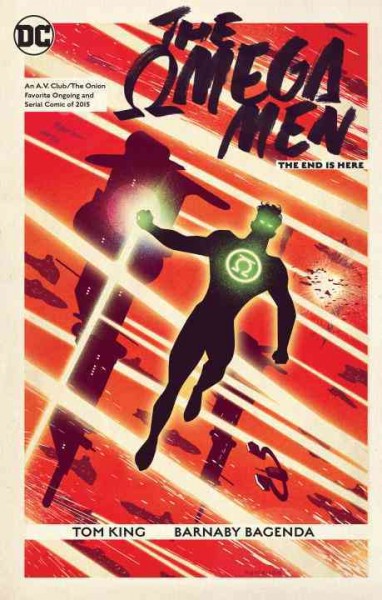 What happens when you give one of the top comic book writers around a
What happens when you give one of the top comic book writers around a 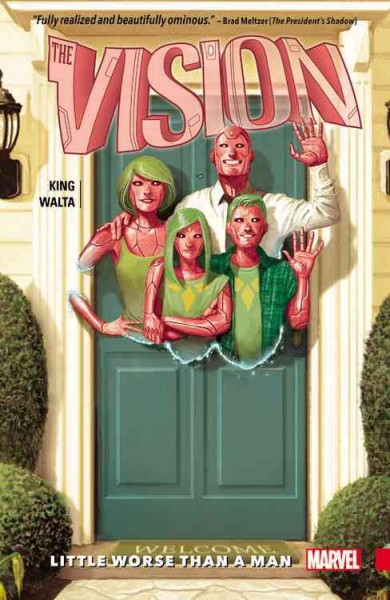 That’s right, two by Tom King. In this title for Marvel comics, King takes Vision, the lesser-known robotic member of the Avengers, and sends him to suburbia. Vision takes a job with the US government and builds himself a robotic wife and two kids, modeled after himself. What starts out as a quirky fish-out-of-water sorry about a super-powered family of robots getting along with the neighbors quickly becomes dark when things take a deadly turn. Accompanied by Gabriel Walta’s art, this unexpected hit delivers a captivating story.
That’s right, two by Tom King. In this title for Marvel comics, King takes Vision, the lesser-known robotic member of the Avengers, and sends him to suburbia. Vision takes a job with the US government and builds himself a robotic wife and two kids, modeled after himself. What starts out as a quirky fish-out-of-water sorry about a super-powered family of robots getting along with the neighbors quickly becomes dark when things take a deadly turn. Accompanied by Gabriel Walta’s art, this unexpected hit delivers a captivating story.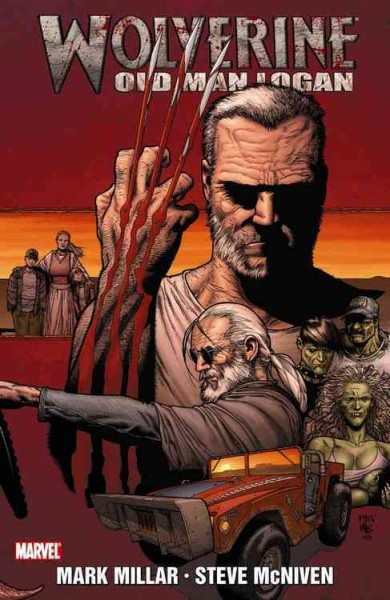 An elderly Logan, formerly the X-Man Wolverine, is living in a dystopian U.S., controlled by a group of villains that have divided the country up between themselves. Unlike the film, the book can pull from any Marvel properties it wishes, meaning that this book features characters and concepts from throughout the Marvel universe, including, but not limited to, a band of hillbilly Hulks, a Venom dinosaur, and an elderly Hawkeye. The book differs from the film vastly in plot, but shares its tone and themes: legacy and mortality. It’s a favorite of X-Men fans, and if you enjoyed the film, it’s definitely worth picking up.
An elderly Logan, formerly the X-Man Wolverine, is living in a dystopian U.S., controlled by a group of villains that have divided the country up between themselves. Unlike the film, the book can pull from any Marvel properties it wishes, meaning that this book features characters and concepts from throughout the Marvel universe, including, but not limited to, a band of hillbilly Hulks, a Venom dinosaur, and an elderly Hawkeye. The book differs from the film vastly in plot, but shares its tone and themes: legacy and mortality. It’s a favorite of X-Men fans, and if you enjoyed the film, it’s definitely worth picking up.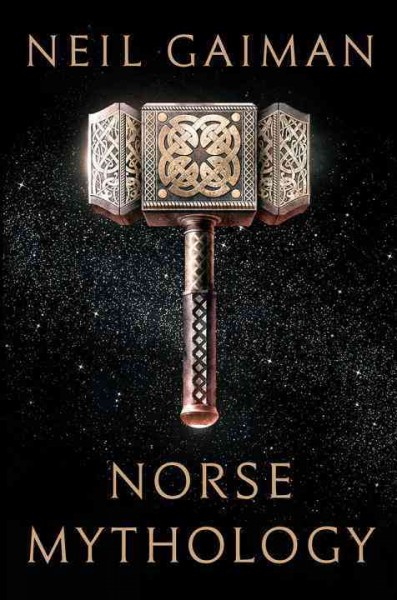 Neil Gaiman’s
Neil Gaiman’s  beginning with basic origin stories and culminating in the final chapter with the story of Ragnarok, the Norse doomsday prophecy. Gaiman takes these classic tales and puts his own twist in them, writing them as if they were brand-new inventions of his mind. Norse Mythology is fantastic and, at the very least, an extremely fun read that anyone who loves fantasy of mythology (or even someone who doesn’t) should pick up and give a shot.
beginning with basic origin stories and culminating in the final chapter with the story of Ragnarok, the Norse doomsday prophecy. Gaiman takes these classic tales and puts his own twist in them, writing them as if they were brand-new inventions of his mind. Norse Mythology is fantastic and, at the very least, an extremely fun read that anyone who loves fantasy of mythology (or even someone who doesn’t) should pick up and give a shot.